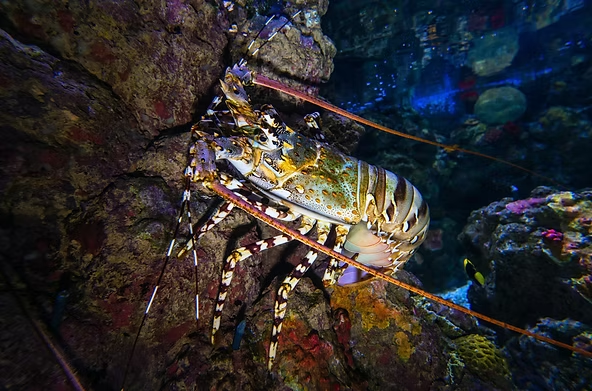The American Lobster: Ocean Giant
The American lobster, also called the Maine lobster, is the world’s largest crustacean by weight, reaching up to 44 pounds (20 kg). It is closely related to the European lobster but only distantly related to spiny lobsters found in the Caribbean and California. This species supports one of the most valuable fisheries in the northwestern Atlantic Ocean.
Appearance and Adaptations
Most American lobsters are rusty brown, though rare color variations include blue, green, mottled, or even half-and-half color splits. They have ten legs, with the first pair modified into two powerful claws: a crushing claw and a cutting claw. Like all decapods, they wear a hard exoskeleton that must be shed through molting in order to grow. After molting, the new shell remains soft for several hours, leaving the lobster vulnerable to predators.
Habitat and Feeding
American lobsters live along rocky reefs, hiding during the day and emerging at twilight or night to forage. They are opportunistic feeders, eating invertebrates, decaying matter, and some algae. Despite their size, they are prey for octopuses, large fishes, and many predators during their juvenile stages.
Life Cycle and Reproduction
Reproduction occurs via internal fertilization. Males transfer sperm to females, who then carry fertilized eggs on the underside of their bodies until hatching. This reproductive strategy helps sustain their populations across a wide range.
Fishery and Conservation
The American lobster is the foundation of a massive and lucrative fishery. To keep the industry sustainable, management strategies such as size limits and gear restrictions are in place. While the species overall is not at risk of extinction, regional populations can fluctuate and remain sensitive to environmental changes and fishing pressures.
Why It Matters
American lobsters are not only iconic seafood but also vital to the Atlantic ecosystem and coastal economies. Continued careful management ensures both the survival of this species and the longevity of the fishery it supports.

